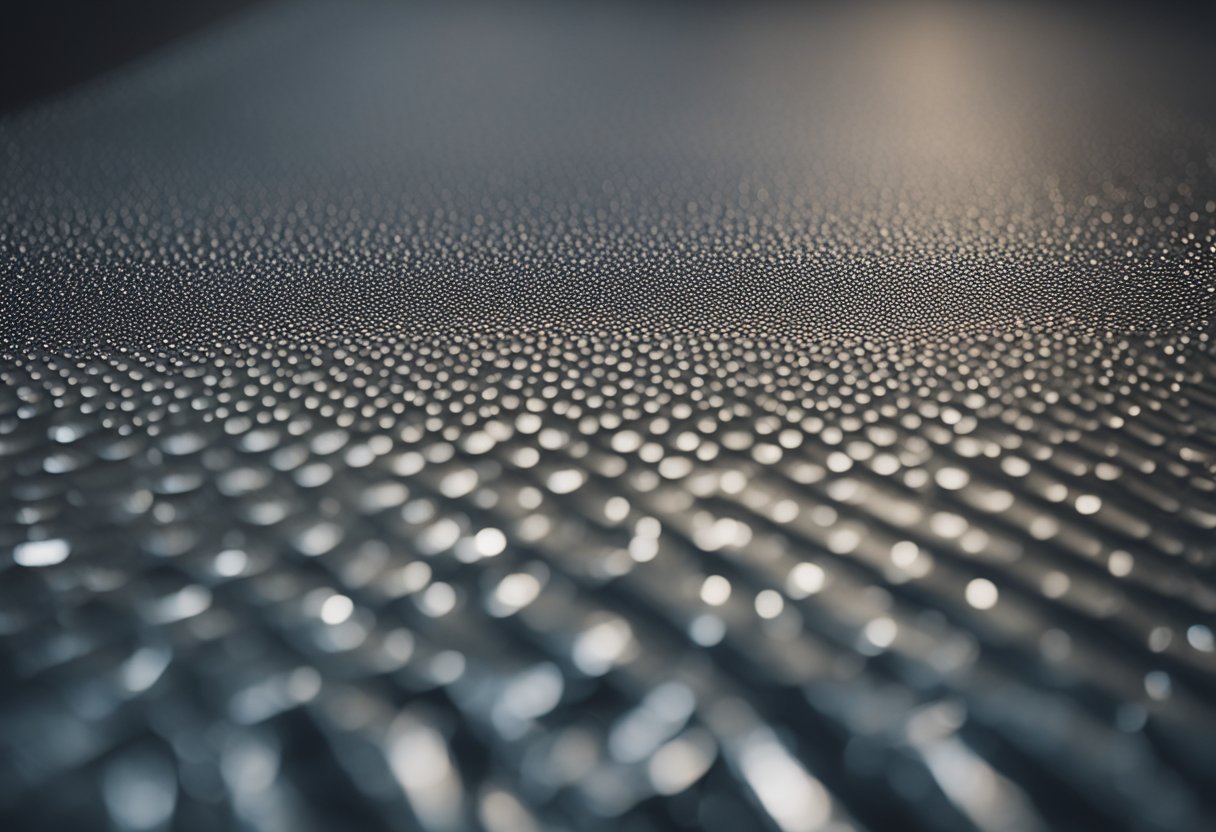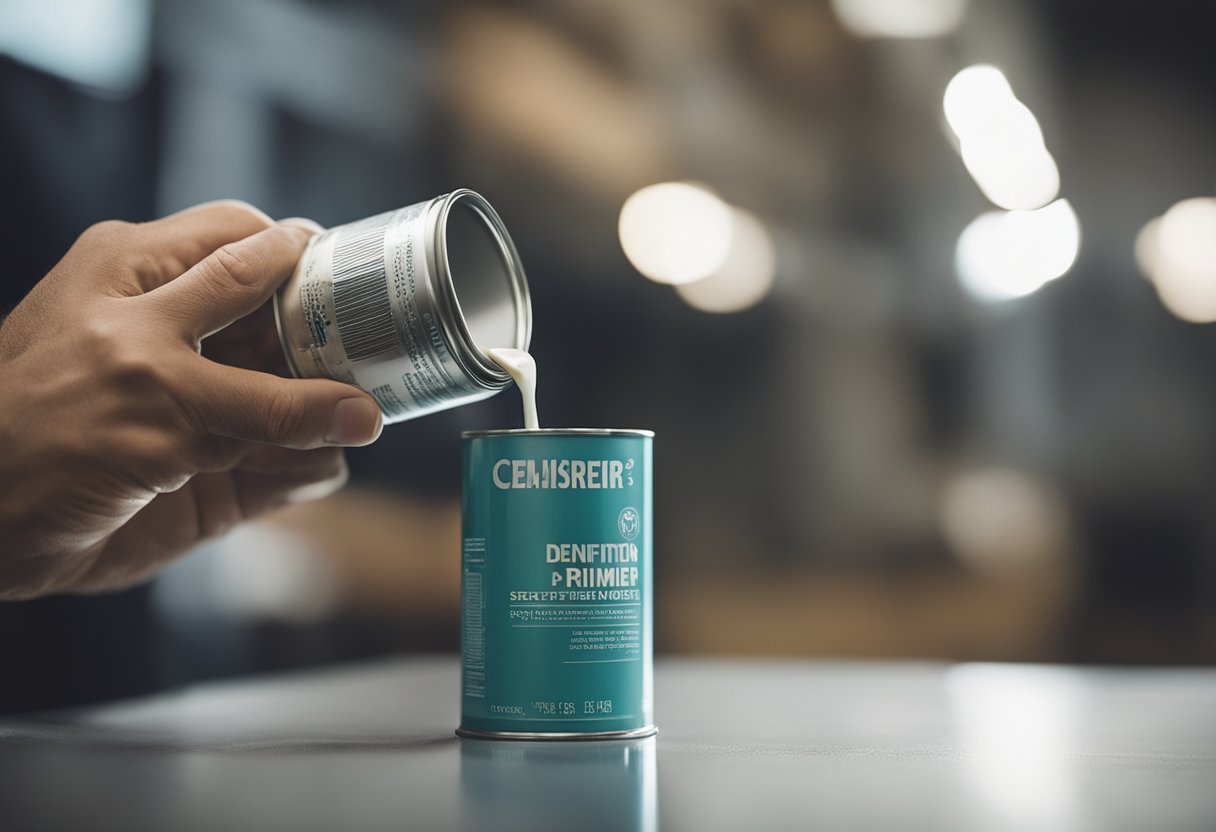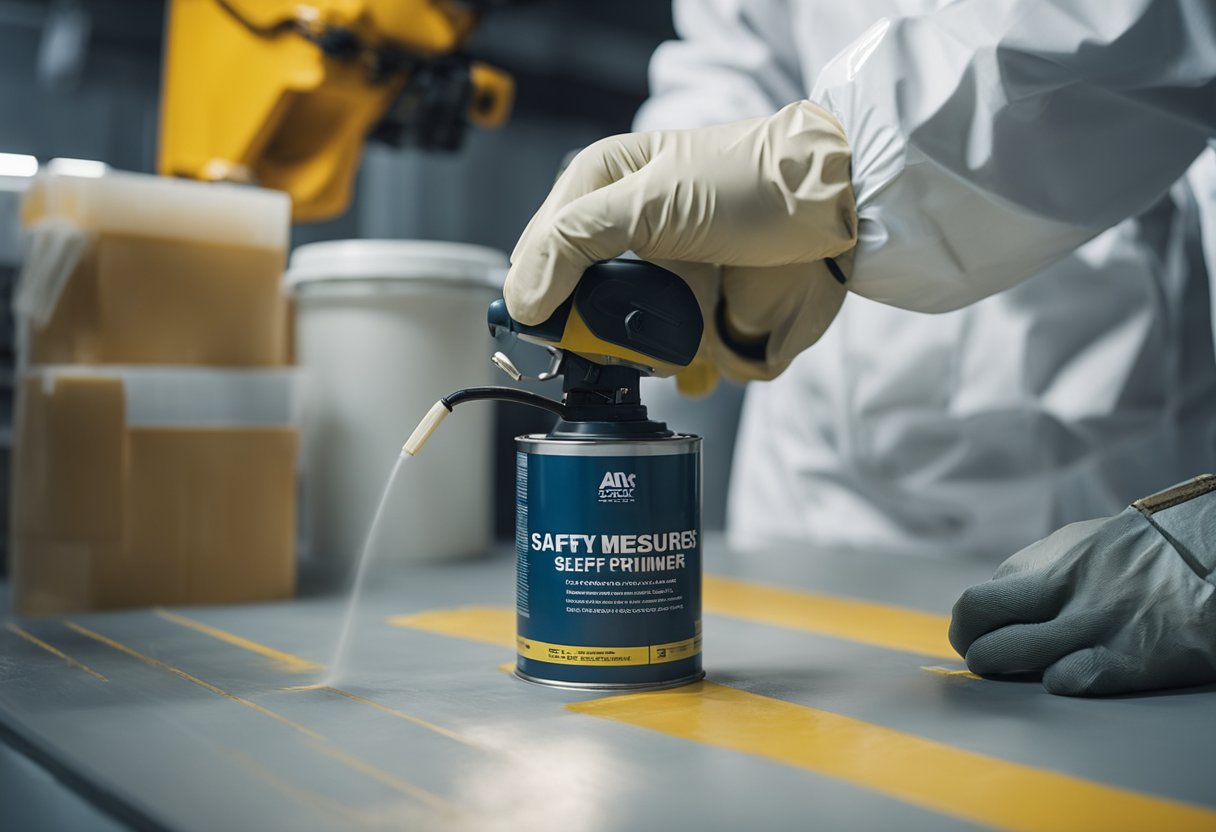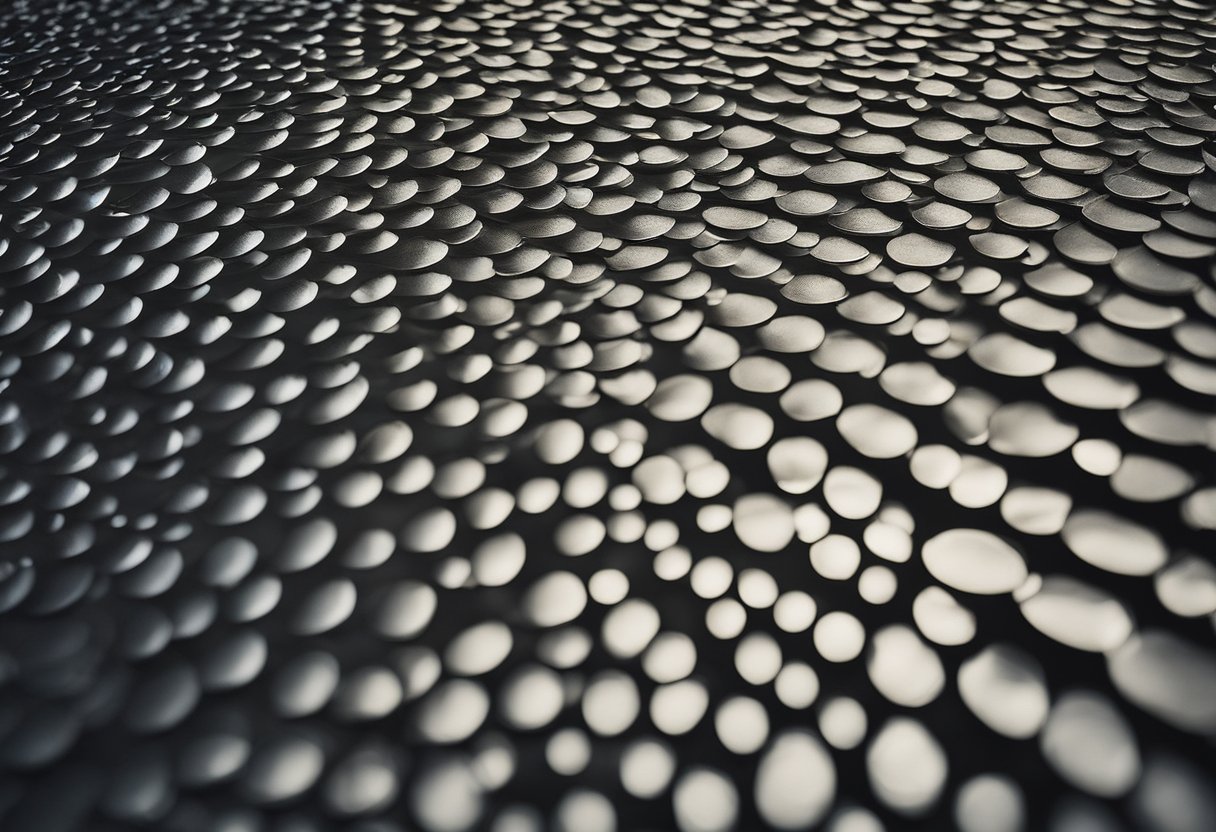Self-etching primer is a type of primer that is designed to etch the surface of metal and promote adhesion of the paint. It is used to prevent rust and corrosion on metal surfaces, particularly in automotive and marine applications. But what about using self-etching primer over paint? Is it possible, and is it a good idea?
The answer is not straightforward. While some manufacturers may advise against using self-etching primer over paint, others say it is possible with the right preparation and application process. It’s important to understand the benefits and drawbacks of using self-etching primer over paint, as well as the potential safety hazards and post-priming steps that need to be taken. In this article, I will provide a comprehensive guide to using self-etching primer over paint, including tips and best practices to help ensure a successful outcome.
Key Takeaways
- Using self-etching primer over paint is possible, but it requires proper preparation and application.
- Self-etching primer can provide excellent adhesion and corrosion resistance on metal surfaces, but it may not be suitable for all types of paint.
- Safety measures should be taken when using self-etching primer, including wearing protective gear and working in a well-ventilated area.
Understanding Self-Etching Primer
https://www.youtube.com/watch?v=EBj_wz-2HW0&embed=true
As a professional painter, I have used self-etching primer on various projects, and I can attest to its effectiveness. Self-etching primer is a type of primer used on metal surfaces to enhance the adhesion of paint. It is formulated with an acidic component that allows it to chemically bond with the metal surface. This etching process creates a rough surface that enhances the primer’s grip on the metal, ensuring the paint adheres better and lasts longer.
The acidic component in self-etching primer is usually phosphoric acid, which is known for its ability to etch metal surfaces. The acid reacts with the metal surface, creating a chemical bond that is stronger than a mechanical bond. The rough surface created by the etching process provides a better surface for the primer to adhere to, resulting in a more durable paint job.
Self-etching primer is also effective in preventing rust and corrosion on metal surfaces. The acid in the primer reacts with the metal surface, creating a protective layer that prevents rust from forming. This makes it an ideal primer for metal surfaces that are exposed to harsh weather conditions or corrosive materials.
In summary, self-etching primer is a highly effective primer that chemically bonds with metal surfaces, creating a rough surface that enhances the adhesion of paint. Its acidic component, usually phosphoric acid, etches the metal surface, creating a strong chemical bond that is resistant to rust and corrosion.
Preparation Before Application
https://www.youtube.com/watch?v=cNn9OY-_07k&embed=true
Before applying self-etching primer over old paint, it is important to prepare the surface properly. This will ensure that the primer adheres well to the surface and provides the best possible protection against rust and corrosion. Here are the steps that I follow for surface preparation:
Sanding
The first step in preparing the surface is to sand it down. This will remove any loose or flaking paint and create a rough surface for the primer to adhere to. I use a fine-grit sandpaper for this purpose, and make sure that I sand the entire surface evenly. After sanding, I wipe the surface clean with a dry cloth to remove any dust or debris.
Cleaning the Surface
The next step is to clean the surface thoroughly. I use a degreaser or a strong detergent to remove any oil, grease, or other contaminants that may be present on the surface. It is important to make sure that the surface is completely clean and free of any residue before applying the primer.
Surface Preparation
After cleaning, I use a rust converter to treat any rust that may be present on the surface. This will help to prevent further rusting and ensure that the primer adheres well to the surface. I follow the instructions on the rust converter carefully, and make sure that I apply it evenly over the entire surface.
Old Paint
If the old paint is in good condition, I do not remove it completely. Instead, I sand it down lightly to create a rough surface for the primer to adhere to. If the old paint is in poor condition, I remove it completely using a paint stripper or a scraper.
In summary, proper surface preparation is crucial for achieving the best results when applying self-etching primer over old paint. By following the steps outlined above, I ensure that the surface is clean, free of contaminants, and ready for the primer.
Application Process
https://www.youtube.com/watch?v=CX9SNa36gSU&embed=true
When applying self-etching primer over paint, it is important to ensure that the surface is clean and free of any contaminants such as dirt, dust, or grease. I recommend using a degreaser to clean the surface thoroughly before applying the primer. Once the surface is clean, you can start applying the primer.
I prefer to use a spray gun when applying self-etching primer over paint as it provides a more even and consistent application. However, you can also use a brush or roller if that is more convenient for you. Just make sure to apply the primer evenly and avoid applying thick coats as this can lead to cracking and peeling.
When applying the primer, it is important to wear protective gear such as gloves, goggles, and a mask to avoid any contact with the skin or inhalation of fumes. Make sure to apply the primer in a well-ventilated area to avoid any health hazards.
I recommend applying a single coat of self-etching primer over paint. This is because the primer is designed to create a chemical bond with the metal surface, not the paint. Applying a thick coat of primer can lead to poor adhesion and can cause the paint to peel or crack.
In summary, when applying self-etching primer over paint, ensure that the surface is clean, use a spray gun for an even and consistent application, avoid applying thick coats, and wear protective gear. With these steps, you can ensure a successful application of self-etching primer over paint.
Self-Etching Primer on Different Surfaces
When it comes to using self-etching primer over paint, it is essential to consider the surface you are working on. Self-etching primers are designed to work on metal surfaces, bare metal, aluminum, and steel.
For metal surfaces, it is advisable to clean the surface thoroughly before applying the self-etching primer. This ensures that the primer adheres well to the surface. Additionally, it is important to note that self-etching primers are not suitable for use on galvanized metal surfaces as they contain zinc, which can react with the acidic primer.
Bare metal surfaces, on the other hand, are ideal for self-etching primer application. The primer chemically etches the surface, creating a rough surface that enhances the primer’s grip on the metal. This ensures that the paint adheres better and lasts longer.
When it comes to aluminum surfaces, it is important to use a self-etching primer that is specifically designed for aluminum. This is because aluminum surfaces are non-porous, and regular self-etching primers may not adhere well to them.
Self-etching primers can also be used on fiberglass surfaces. However, it is important to note that fiberglass surfaces require a specific type of self-etching primer that is formulated to work with them. Using the wrong primer can result in poor adhesion and peeling of the paint.
For plastic surfaces, it is advisable to use a plastic adhesion promoter before applying the self-etching primer. This ensures that the primer adheres well to the plastic surface.
In conclusion, self-etching primers are ideal for use on different surfaces, including metal surfaces, bare metal, aluminum, and steel. However, it is important to use the right type of primer for each surface to ensure proper adhesion and a long-lasting finish.
Post-Priming Steps
Once you have applied the self-etching primer over your old paint, it is important to follow these post-priming steps to ensure the best results for your top coat.
1. Allow Drying Time
Before applying your top coat, make sure to allow the self-etching primer to fully dry. The drying time can vary depending on the type of paint and primer used, so it is important to refer to the manufacturer’s instructions. Generally, you should wait at least 24 hours before applying your top coat.
2. Apply Base Coat
After the self-etching primer has dried, apply a base coat of paint. This will help improve the adhesion of the top coat. The type of paint you use as a base coat will depend on the type of top coat you plan to use. Make sure to choose a compatible paint type to ensure the best results.
3. Apply Top Coat
Once the base coat has dried, you can apply your top coat. It is important to note that painting over self-etching primer requires a different approach than painting over bare metal. The self-etching primer provides a good base for the top coat, but it is important to choose a top coat that is compatible with the primer. Refer to the manufacturer’s instructions for recommendations on top coat compatibility.
4. Allow Drying Time
After applying the top coat, allow it to fully dry before handling or using the painted surface. The drying time can vary depending on the type of paint used, so refer to the manufacturer’s instructions for guidance.
By following these post-priming steps, you can achieve a smooth and durable finish when painting over self-etching primer.
Safety Measures
When working with self-etching primer over paint, it is crucial to take the necessary safety measures to protect yourself. Here are some safety measures that I recommend:
Wear Protective Gear
It is important to wear the right protective gear when using self-etching primer over paint. I recommend wearing a respirator to protect your lungs from the fumes. Goggles are also essential to protect your eyes from the primer and paint particles.
Work in a Well-Ventilated Area
Self-etching primer contains chemicals that can be harmful if inhaled. Therefore, it is important to work in a well-ventilated area. If possible, work outside or in a garage with the door open. If you are working indoors, make sure to open windows and use fans to circulate the air.
Use Safety Equipment
In addition to a respirator and goggles, I also recommend wearing gloves and a long-sleeved shirt to protect your skin from the primer and paint. It is also important to have a fire extinguisher nearby in case of accidental fires.
Follow the Manufacturer’s Instructions
Always read and follow the manufacturer’s instructions when using self-etching primer over paint. The instructions will provide you with important safety information, as well as details on how to properly apply the primer.
By taking these safety measures, you can protect yourself from the harmful effects of self-etching primer over paint. Remember to always prioritize safety when working with chemicals.
Benefits of Using Self-Etching Primer
As a professional painter, I have found that using self-etching primer has several benefits when it comes to painting over old paint. Here are some of the benefits that I have noticed:
Improved Adhesion
One of the main benefits of using self-etching primer is that it improves adhesion. This is because the primer contains acid that etches the surface, creating a better surface for the paint to adhere to. This results in a more durable and long-lasting finish.
Corrosion Resistance
Another benefit of using self-etching primer is that it provides corrosion resistance. The primer contains zinc phosphate pigmentation, which helps to prevent rust from forming on the metal surface. This makes it an ideal choice for painting over old metal surfaces.
Protection
Self-etching primer also provides protection to the surface it is applied to. It creates a barrier between the surface and the environment, protecting it from damage caused by exposure to moisture, UV rays, and other environmental factors.
Professional-Looking Results
Using self-etching primer can also result in a more professional-looking finish. The primer creates a uniform surface for the paint to adhere to, which can help to improve the overall appearance of the final paint job. This is especially important when painting over old paint, as it can be difficult to achieve a smooth and even finish without the use of a primer.
Overall, using self-etching primer has several benefits when it comes to painting over old paint. It improves adhesion, provides corrosion resistance, protects the surface, and can result in a more professional-looking finish.
Potential Drawbacks
As with any painting project, using self-etching primer over paint may have some potential drawbacks that you should be aware of. Here are a few things to keep in mind:
-
Damage to existing paint: Applying self-etching primer over existing paint may cause damage to the paint. The acidic nature of the primer can cause the paint to peel or chip away, leaving you with a less than perfect finish.
-
Temperature and humidity: Self-etching primer is best applied in temperatures between 60°F and 80°F and with a relative humidity of less than 70%. If the temperature or humidity is too high, the primer may not adhere properly, leading to less than desirable results.
-
Environmental conditions: Using self-etching primer in an outdoor environment may not be the best idea. The primer is not designed to withstand exposure to the elements, and may break down over time, leading to a less than durable finish.
-
Defects: If there are any defects in the existing paint, self-etching primer may not be able to fill them in. This can lead to an uneven finish that may be difficult to correct.
Overall, while self-etching primer can be a useful tool for protecting bare metal, it may not be the best option for use over existing paint. If you are considering using self-etching primer over paint, be sure to weigh the potential drawbacks against the benefits to determine if it is the right choice for your project.
Frequently Asked Questions
https://www.youtube.com/watch?v=cEk6Qk-Rk50&embed=true
How many coats of self etching primer should I apply?
It is recommended to apply at least two coats of self etching primer over paint. However, the number of coats may vary depending on the condition of the surface and the type of paint being used. It is always best to follow the manufacturer’s instructions for the specific product being used.
Can I use etch primer over existing paint?
Yes, self etching primer can be applied over existing paint, but it is important to properly prepare the surface before application. The surface should be cleaned and sanded to ensure proper adhesion. It is also important to note that self etching primer is not designed to be a filler, so any imperfections in the existing paint should be addressed before applying the primer.
Can I apply primer over paint?
Yes, primer can be applied over paint, but it is important to properly prepare the surface before application. The surface should be cleaned and sanded to ensure proper adhesion. It is also important to note that primer is not designed to be a filler, so any imperfections in the existing paint should be addressed before applying the primer.
Does etch primer need a top coat?
Yes, self etching primer should be top coated with a compatible paint system. The top coat will provide additional protection and durability to the surface. It is important to follow the manufacturer’s instructions for the specific product being used.
Can I use filler primer over self etching primer?
Yes, filler primer can be applied over self etching primer, but it is important to properly prepare the surface before application. The surface should be cleaned and sanded to ensure proper adhesion. It is also important to note that filler primer is designed to fill in imperfections, so any imperfections in the self etching primer should be addressed before applying the filler primer.
Is it recommended to use epoxy primer over paint?
Yes, epoxy primer can be used over paint, but it is important to properly prepare the surface before application. The surface should be cleaned and sanded to ensure proper adhesion. Epoxy primer provides excellent adhesion and corrosion protection, making it a good choice for metal surfaces. It is important to follow the manufacturer’s instructions for the specific product being used.

Hi, I’m Sal Muller of Tooltrip.com. My DIY experience led me to understand essential power tools for home projects. Tooltrip.com guides enthusiasts and professionals in choosing right tools for any job. I provide concise top tool reviews for easier, efficient DIY.







